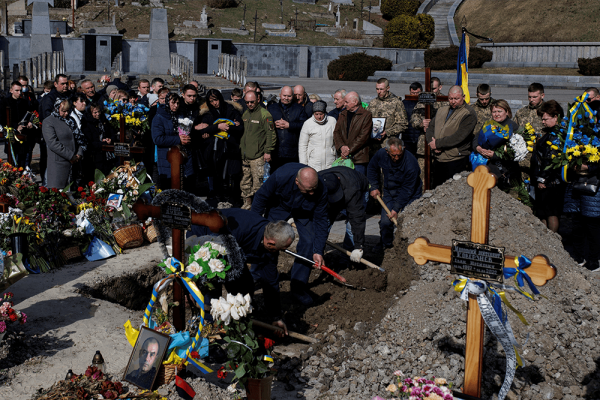Mar 30, 2022
The now twice weekly funerals of soldiers, which take place at the Church of the Holy Apostles Peter and Paul in the center of the city, are one of the few reminders of war.
Read the Full Article

Already a subscriber? Login
